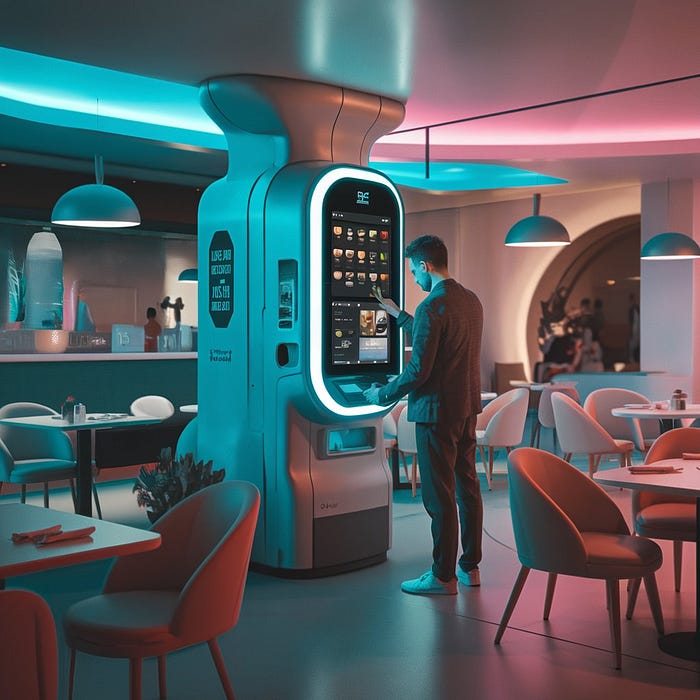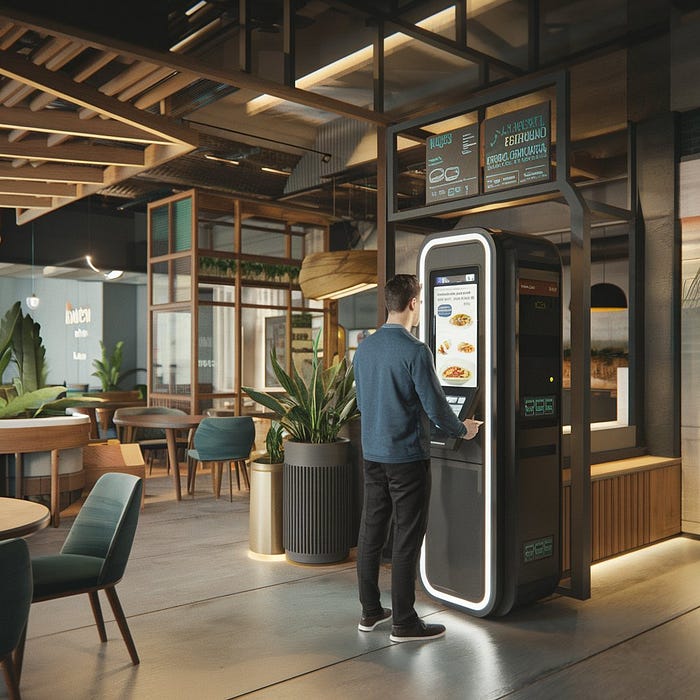Top kiosk features every restaurant needs now.

The Growing Role of Kiosk Technology in the Restaurant Industry
In recent years, the restaurant industry has undergone a digital transformation driven by technological advancements and evolving customer expectations. Among these innovations, self-service Restaurant kiosk technology has emerged as a game-changer, revolutionizing the way customers interact with restaurants. These kiosks are not just about novelty — they significantly enhance the customer experience, improve operational efficiency, and drive revenue growth.
Kiosks reduce human error, increase order accuracy, and allow restaurants to serve more customers faster, especially during peak hours. With features tailored for user convenience and robust back-end systems to aid operations, kiosks have become an essential tool for modern restaurants aiming to stay competitive and customer-centric.
User-Friendly Interface and Accessibility
One of the most critical factors in the success of restaurant kiosks is a user-friendly interface. An intuitive design ensures that customers can place their orders quickly and effortlessly, reducing friction and wait times. Accessibility plays a pivotal role as well, ensuring that the system can be used by people of all abilities.
Touchscreen Responsiveness and Layout Design
Touchscreens must be highly responsive to ensure smooth interactions. A laggy or unresponsive screen can frustrate customers and lead to order abandonment. The layout of the interface should follow logical flow patterns, with clearly labeled categories and easy navigation. Visual elements like icons, images, and bold fonts can enhance the experience, especially for users unfamiliar with the restaurant’s offerings.
Multi-language Support
In multicultural societies or tourist-heavy locations, multi-language support is non-negotiable. Offering multiple languages helps ensure that language barriers do not hinder the ordering process. This inclusivity not only improves the customer experience but also expands the restaurant’s reach to a broader audience.
Accessibility Features for All Customers
To be truly inclusive, kiosks must cater to individuals with disabilities. This includes features like screen readers for the visually impaired, adjustable text sizes, and high-contrast modes. Additionally, the physical design of kiosks should consider wheelchair accessibility and include touchpoints at appropriate heights. Ensuring ADA (Americans with Disabilities Act) compliance or equivalent standards in other countries is essential.
Seamless Integration with POS and Kitchen Systems
For kiosks to deliver on their promise of efficiency, they must be tightly integrated with the restaurant’s POS and kitchen management systems. Real-time communication between the front-end kiosk and the back-end operations ensures smooth service and operational consistency.
Real-Time Order Transmission
Orders placed at kiosks should instantly appear on kitchen display systems (KDS), minimizing the need for manual input and reducing the chances of errors. This real-time transmission speeds up service and ensures that kitchen staff can begin preparing orders immediately, leading to shorter wait times and increased throughput.
Inventory Management Synchronization
Integrating kiosks with inventory systems helps maintain accurate stock levels and prevents customers from ordering unavailable items. If an item is out of stock, the system can automatically suggest alternative options. This not only enhances the customer experience but also reduces staff workload.
Payment Processing Integration
Kiosks should support a wide variety of payment methods, including credit/debit cards, digital wallets, QR code payments, and contactless options like NFC. Secure payment gateways must be in place to ensure transaction safety. Seamless payment processing also reduces queues and speeds up the entire order cycle.
Customization and Upselling Capabilities
Modern consumers value personalization. Kiosks that allow customers to tailor their orders to their liking can significantly improve satisfaction. Additionally, strategic upselling features can help restaurants boost average order values without seeming pushy.
Personalized Order Modifications
Customers appreciate the ability to customize their meals — whether it’s removing an ingredient, selecting a preferred level of spice, or adding extras. The kiosk should make these options easily accessible and intuitive to navigate. Customization empowers the customer and leads to higher satisfaction levels.
Dynamic Upselling and Suggestive Selling
Kiosks can be programmed to suggest add-ons or upgrades based on the customer’s selections. For example, suggesting fries and a drink when a customer orders a burger, or recommending a dessert based on the meal ordered. These smart suggestions can significantly increase the average ticket size.
Loyalty Program Integration
Integrating loyalty programs with kiosks enables customers to earn and redeem rewards directly at the point of sale. This encourages repeat visits and builds long-term customer relationships. Displaying points or rewards status during the ordering process can further incentivize engagement.
Robust Security and Data Privacy Measures
Handling customer data and payment information requires stringent security measures. Restaurants must prioritize data protection to build trust and ensure compliance with regulatory standards.
PCI Compliance and Secure Payment Protocols
All payment systems must adhere to the Payment Card Industry Data Security Standard (PCI DSS). Compliance ensures that sensitive cardholder data is securely processed, stored, and transmitted. Kiosks must use secure connections and tokenization to protect transactions.
Data Encryption and Privacy Policies
End-to-end encryption should be implemented to secure data transmission between kiosks and servers. Additionally, restaurants should have clear, transparent privacy policies outlining how customer data is used, stored, and protected. This transparency builds trust and reassures users.
Regular Software Updates and Maintenance
Routine software updates are crucial to patch security vulnerabilities, enhance features, and maintain system stability. Scheduled maintenance ensures that kiosks operate smoothly, and any bugs or performance issues are promptly addressed.

Operational Management and Reporting Tools
Kiosks aren’t just beneficial for customers — they provide powerful tools for restaurant managers to monitor performance, gather insights, and make informed decisions.
Sales Analytics and Reporting
Kiosks can collect valuable data on sales trends, peak hours, popular menu items, and customer preferences. These insights enable managers to optimize inventory, adjust staffing levels, and refine menu offerings based on actual demand.
Remote Management and Troubleshooting
Modern kiosk systems support remote access for monitoring and maintenance. Managers can receive alerts, perform diagnostics, and troubleshoot issues without being physically present. This reduces downtime and ensures consistent service delivery.
Customer Feedback Collection
Feedback tools embedded in kiosks allow customers to rate their experience or leave comments. This real-time feedback helps restaurants identify areas of improvement and maintain high service standards.
Conclusion
Kiosk technology is no longer a futuristic concept — it’s a practical, proven solution that empowers restaurants to deliver superior customer experiences while streamlining operations. With intuitive interfaces, real-time integration, customizable options, and secure payment processing, kiosks address the needs of both customers and restaurant operators.
Investing in kiosk systems today positions restaurants to thrive in a fast-paced, digital-first marketplace. By enhancing service speed, increasing order accuracy, and unlocking valuable data insights, kiosks play a pivotal role in driving long-term growth and customer loyalty. Now is the time for restaurant owners to embrace this innovation and elevate their operations to the next level.
Comments
Post a Comment